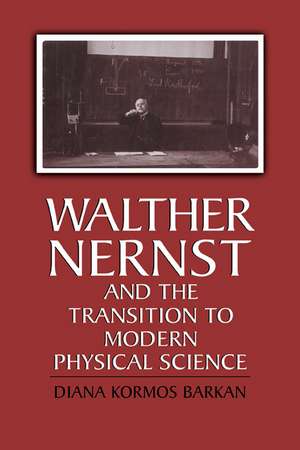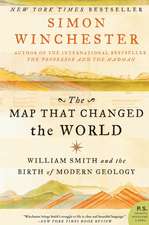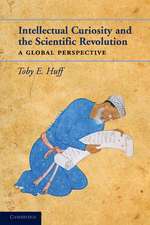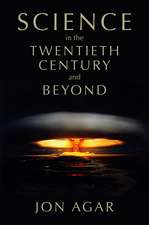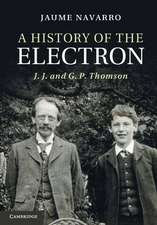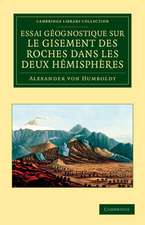Walther Nernst and the Transition to Modern Physical Science
Autor Diana Kormos Barkanen Limba Engleză Paperback – 2 mar 2011
| Toate formatele și edițiile | Preț | Express |
|---|---|---|
| Paperback (1) | 331.39 lei 6-8 săpt. | |
| Cambridge University Press – 2 mar 2011 | 331.39 lei 6-8 săpt. | |
| Hardback (1) | 450.94 lei 6-8 săpt. | |
| Cambridge University Press – 12 ian 1999 | 450.94 lei 6-8 săpt. |
Preț: 331.39 lei
Nou
Puncte Express: 497
Preț estimativ în valută:
63.41€ • 66.21$ • 52.36£
63.41€ • 66.21$ • 52.36£
Carte tipărită la comandă
Livrare economică 15-29 aprilie
Preluare comenzi: 021 569.72.76
Specificații
ISBN-13: 9780521176293
ISBN-10: 0521176298
Pagini: 302
Dimensiuni: 152 x 229 x 17 mm
Greutate: 0.45 kg
Editura: Cambridge University Press
Colecția Cambridge University Press
Locul publicării:New York, United States
ISBN-10: 0521176298
Pagini: 302
Dimensiuni: 152 x 229 x 17 mm
Greutate: 0.45 kg
Editura: Cambridge University Press
Colecția Cambridge University Press
Locul publicării:New York, United States
Cuprins
Preface and acknowledgments; 1. The invention of identity; 2. Beginning; 3. The early researchers; 4. The Göttingen years; 5. The Nernst-Planck exchange; 6. Electricity and iron; 7. High temperatures and the heat theorem; 8. Theory and heat theory; 9. Berlin and low temperatures; 10. The incorporation of the quantum theory; 11. The witches Sabbath: the Solvay Congress; 12. The Nobel Prize; Conclusion; Bibliography; Notes; Index.
Recenzii
Review of the hardback: 'This insightful book guides the reader through the most successful but also contradictory development of the beginning of the 20th century.' Hermann Berg, Journal of Electroanalytical Chemistry
Review of the hardback: 'A beautifully written and thoroughly researched book.' Bretislav Friedrich, Angewandte Chemie
Review of the hardback: '… an impressive reconstruction of Nernst's intellectual journey … Barkan's book makes notable contributions in the history of physical chemistry … Barkan's study … deserves much attention from historians of physics, especially those who are interested in the early years of quantum theory … a rich narrative that allows a glimpse of numerous scientists and various places in Nernst's time.' Annals of Science
Review of the hardback: '… a valuable and interesting book.' Ambix
Review of the hardback: 'A beautifully written and thoroughly researched book.' Bretislav Friedrich, Angewandte Chemie
Review of the hardback: '… an impressive reconstruction of Nernst's intellectual journey … Barkan's book makes notable contributions in the history of physical chemistry … Barkan's study … deserves much attention from historians of physics, especially those who are interested in the early years of quantum theory … a rich narrative that allows a glimpse of numerous scientists and various places in Nernst's time.' Annals of Science
Review of the hardback: '… a valuable and interesting book.' Ambix
Descriere
A 1999 biography of one of Germany's most important scientists (active 1890–1933) and an historical examination of physics and chemistry.
